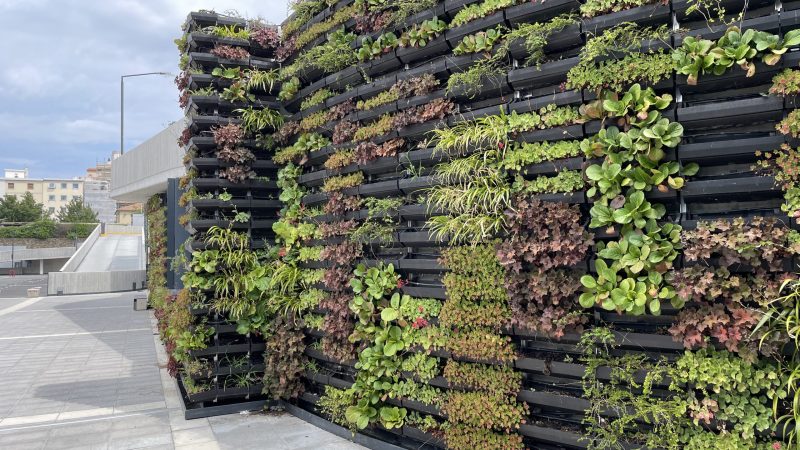Author: Matthias Slatner, acib GmbH
As technology advances and our understanding of biological systems deepens, the integration of biotechnology into architecture is likely to lead to even more innovative and sustainable solutions for buildings, gardens, and city districts. The intersection of biotechnology and architecture opens up innovative opportunities for creating sustainable, efficient, and aesthetically pleasing built environments. acib looks at several ways biotechnology can be integrated into architecture.
Material science approach
Researchers are exploring the use of living organisms such as bacteria or fungi to create self-healing and self-growing building materials. This could lead to structures that repair themselves over time, reducing maintenance costs and extending the life of buildings. Fungal mycelium as a building material has already been developed to a very high technological level. But vegan leather for furniture, made from fungal mycelium or lignin, could be a new design prospect as well. Biopolymers such as polyhydroxyalkonates can also be produced by microorganisms using fermentation. Promising results were recently obtained by acib researchers in Graz.
BioGlue, a project by acib researchers in Tulln, offers a bio-based and biodegradable material for bonding parts. The application of Bioglue to bind wood pellets is also a current research goal of the group. Following the idea of BioGlue as a platform technology, various bio-based coatings are also currently being investigated in acibs’ environmental biotech laboratories.
Smart city approach
The integration of biological systems for climate control could include the use of algae-filled facades to regulate temperature or the use of microorganisms that absorb or release moisture to control humidity levels in buildings. Microbiological infection control through wastewater monitoring can lead to better health care. Or, also already tested in practise, hydrogel, a product of an acib spin-off Agrobiogel, can be used to store water in rooftop gardens, for example, cooling buildings in summer with the power of nature.
Biotechnology can be used to create building environments that contribute to the health and well-being of occupants. This could include the installation of air-purifying plants or materials that promote a healthier indoor environment. Developing an ideal microbiome for urban gardens is also a biotechnology solution.
Microbial fuel cells and other bioenergy technologies can be integrated into building systems to generate electricity from organic waste. This is consistent with the goal of creating more sustainable and self-sufficient structures.
Picture credits: Matthias Slatner, acib GmbH
